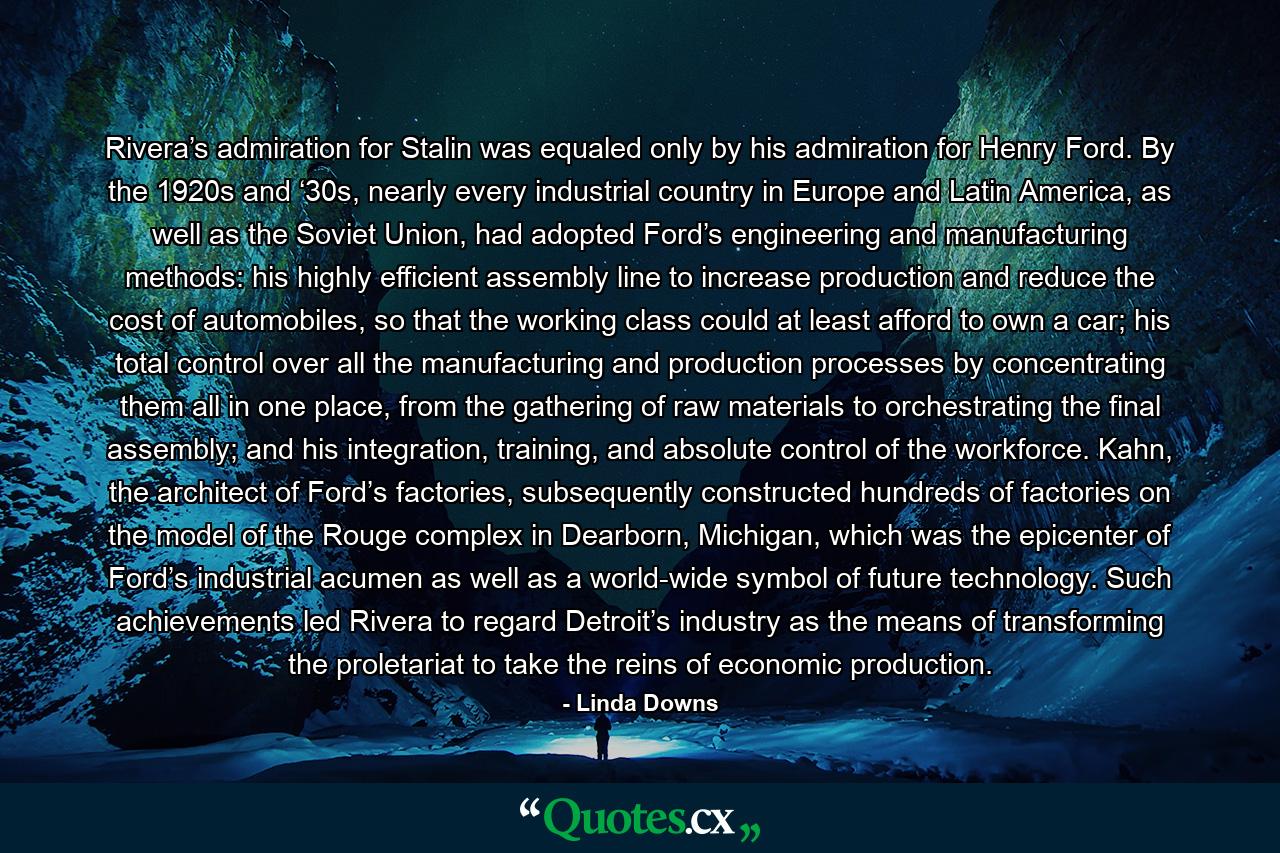Rivera’s admiration for Stalin was equaled only by his admiration for Henry Ford. By the 1920s and ‘30s, nearly every industrial country in Europe and Latin America, as well as the Soviet Union, had adopted Ford’s engineering and manufacturing methods: his highly efficient assembly line to increase production and reduce the cost of automobiles, so that the working class could at least afford to own a car; his total control over all the manufacturing and production processes by concentrating them all in one place, from the gathering of raw materials to orchestrating the final assembly; and his integration, training, and absolute control of the workforce. Kahn, the architect of Ford’s factories, subsequently constructed hundreds of factories on the model of the Rouge complex in Dearborn, Michigan, which was the epicenter of Ford’s industrial acumen as well as a world-wide symbol of future technology. Such achievements led Rivera to regard Detroit’s industry as the means of transforming the proletariat to take the reins of economic production.
